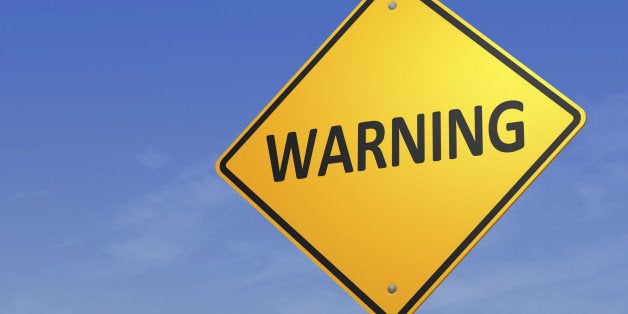
In an article title "Warning: The Literary Canon Could Make Students Squirm," the New York Times yesterday described ongoing debates on college and university campuses about whether or not trigger warnings should be used in advance of discussions that include, among other things, violent, racist and misogynistic content. This argument is a repeat of a long-standing one about the uses and efficacy of warnings regarding possibly disturbing and re-traumatizing content. Conversations about trigger warnings, however, seem more and more like superficial proxies for ones about deeper problems on campuses regarding diversity, equity, the corporatization of education, and, the dreaded word, privilege.
Triggers, images, sounds, smells and, yes, texts, that provoke specific emotional and physical responses in people, are not about "squirming." They are complex, unpredictable and highly individual reactions to material that evokes pain and fear. The idea of trigger warnings started in feminist spaces because experiences with, for example, sexual and domestic violence, are so common that it made sense, out of compassion, to warn participants before revealing graphic descriptions of incest, rape, sexual assault, domestic violence, self-harm and suicide. In recent years, however, the use of trigger warnings has expanded from feminist spaces into broader public discourse. While there are legitimate concerns about how and when trigger warnings should be used, and whether or not their use has been degraded past the point of usefulness, the primary objections cited in the New York Times article should not be among them.
The first objection raised in the article is that professors should be able to use "common sense." Common to whom? Academic cultures are legacy cultures. Until relatively recently, classrooms were largely comprised of young, elite, mostly white men who were not frequently on the receiving end of sex, race, or sexuality based violence and threats. The core canon was built around the same constituency. These were not spaces, historically, where conversations about "women's issues," for example, either took place or were considered vitally important. As we all know, campuses today are much more diverse places and students have more direct experiences of racism, sexism, colonialism and more, including well-documented multi-generational trauma.
Many academics express the belief that their "common sense" judgment, when it comes to material that might cause genuine harm, should be respected. However, history, and the current composition of academia, which remains dominated by white men in most fields of study, suggests that trusting professors to know what will traumatize students is not a wise assumption. Additionally, revelations regarding widespread institutional tolerance for sexual assault on campuses, brought to public attention primarily by students, rarely professors or administrators, do little to inspire confidence in the common sense of either.
Despite good intentions and individual professors' interests, implicit biases are a legitimate and serious problem in academia. There is no reason to think these biases would not inform judgment and reduce empathy. Trigger warnings are fundamentally about empathy, which is informed by epistemology, status and stereotypes. People with higher status, wealth, race and/or sex, for example, have the least amount. This is a consequence of living in a culture optimized to reflect their perspectives and address their needs. When it comes to trigger warnings, the prediction and acknowledgement of pain are salient.
What this objection to warnings ignores is well-documented race and sex-based biases in the assessment and recognition of pain. People in the United States actually feel more empathy when they see a white person in pain than a black person. In their study, "The Girl Who Cried Pain: A Bias Against Women in the Treatment of Pain," researchers Diane E. Hoffmann and Anita J. Tarzian documented the degree to which women's pain is routinely dismissed in these ways as the "not real," "emotional," response of "fragile" females. Not only are womenwho experience pain less likely to be taken seriously when they describe it, but they are less likely to be treated by medical professionals.
"Squirm," and "discomfort," for example, do not accurately capture the sensation of white heat, rapid heartbeat, the feeling that you are about to die or vivid flashbacks of assault. Many administrators and professors feel that students need to grow a "thicker skin." A marginalizing "sticks and stones" understanding of what "counts" as "real" pain is evident not only in the statements of many professors, but in the large number of comments that quickly followed the Times piece, where readers categorized trigger warnings as "coddling" a "weak" "victim-mentality."
Additionally, the idea that any trigger warnings constitute censorship is not only incorrect but also definitively misleading. In most cases, no one is saying professors cannot teach texts or show videos. Nor do warnings imply some sort of apology for lessons to follow. Nor, in the interesting choice of words of one professor quoted in the Times piece, do trigger warnings mean that students "should not be forced to deal with something that makes them uncomfortable." Warnings seek mainly to give students information they need in order to decide whether or not to take or stay in a class.
There are examples, however, that, as The Atlantic's Conor Friedersdorf points out, are broad enough to become meaningless and harmful to the actual purpose of warnings. Putting trigger warning labels on literary works, for example, have a decidedly chilling effect given the history and meaning of burned and banned books. Likewise, blanket warnings, which would result in labeling "classroom material more tame than much of what [students] encounter in daily life... huge chunk of network TV shows, hip hop albums, standup comics and Hollywood films... they'd need to be taped all over campus." Blanket trigger warnings do no one any good and would have a negative effect on campus speech.
Ironically, given the chorus of "free speech!" complaints even against narrowly defined warnings, trigger warnings were, in their origins, a sign of the liberation of speech. They are a civil adaptation to the important acknowledgement and public discussion of stories long suppressed by a culture and a mainstream media either not interested in hearing them or that actively benefits from keeping them hidden. Trigger warnings exist because deadly serious and uncomfortable subjects previously not explored are now on the table and not relegated to a distant past or being discussed primarily by people largely unaffected negatively by them. Exaggerated objections to warnings based on free speech arguments attest to how profoundly integral our free speech norms are to maintaining and changing social structures.
Another way of way of thinking about trigger warnings, in the context of hierarchy and status on campus, is that the people to whom trigger warnings are important are legitimately saying, "I am here, acknowledge me and my experiences." That statement goes far beyond warnings. It is essentially the crux of ongoing debates about what constitutes our core canon and what we do about "privilege." That is why there is particular objection to demands for trigger warnings on "materials that have an established place on syllabuses."
To that end, what the New York Times article, and much of the conversation regarding the use of trigger warnings on campuses, did not talk about and should have was power, especially institutionalized power and the role it plays in deciding what and who are important on campus. Tressie McMillan Cottom argues clearly that concerns for students' feelings often act not to "silence power so much as stifle any discourse about how power acts on people." The results can undermine attempts, among other things, to diversify the canon and its analysis. This was absolutely what happened in the case of Professor Shannon Gibney whose in-class discussion of structural racism "alienated" three white male students who then filed a discrimination suit, was sanctioned as the result of... structural racism and education as a capitalist enterprise.
However, Gibney's perspective is not the primary one being espoused by the loudest challengers to trigger warnings. Those most inclined to resist on the basis of "censorship" appear to frequently be the same people who take their free speech and autonomy for granted and their truth as normative and universal. The speech norms they seem to be espousing, mainly our mainstream ones, are stubbornly tied to discriminatory status quo hierarchies uninterested in "harm."
Having said all of this, I do not think that trigger warnings on campus should be mandated in any way, shape or form. As Professor Brittany Cooper says in describing why she does not employ them, "Encountering material that you have never encountered before, being challenged and learning strategies for both understanding and engaging the material is what it means to get an education." Warnings, originally not about being "offended," narrowly defined and a reflection of compassion, are not in-and-of themselves inimical to this idea or academic freedom.
In the end, the most important fact about trigger warnings isn't whether they are formalized or not, narrow or not, but that they are being discussed on campuses and in mainstream media, and no longer limited to the feminist blogs that understood why they were necessary in the first place. The words themselves, like others before them such as "domestic violence," "sexual assault," "rape culture," signal a shift in the culture towards better understanding of broader perspectives. That empathy and diversity, which is what so much of trigger warnings comes down to, is a topic of debate on campuses, even by proxy, is a good thing.
